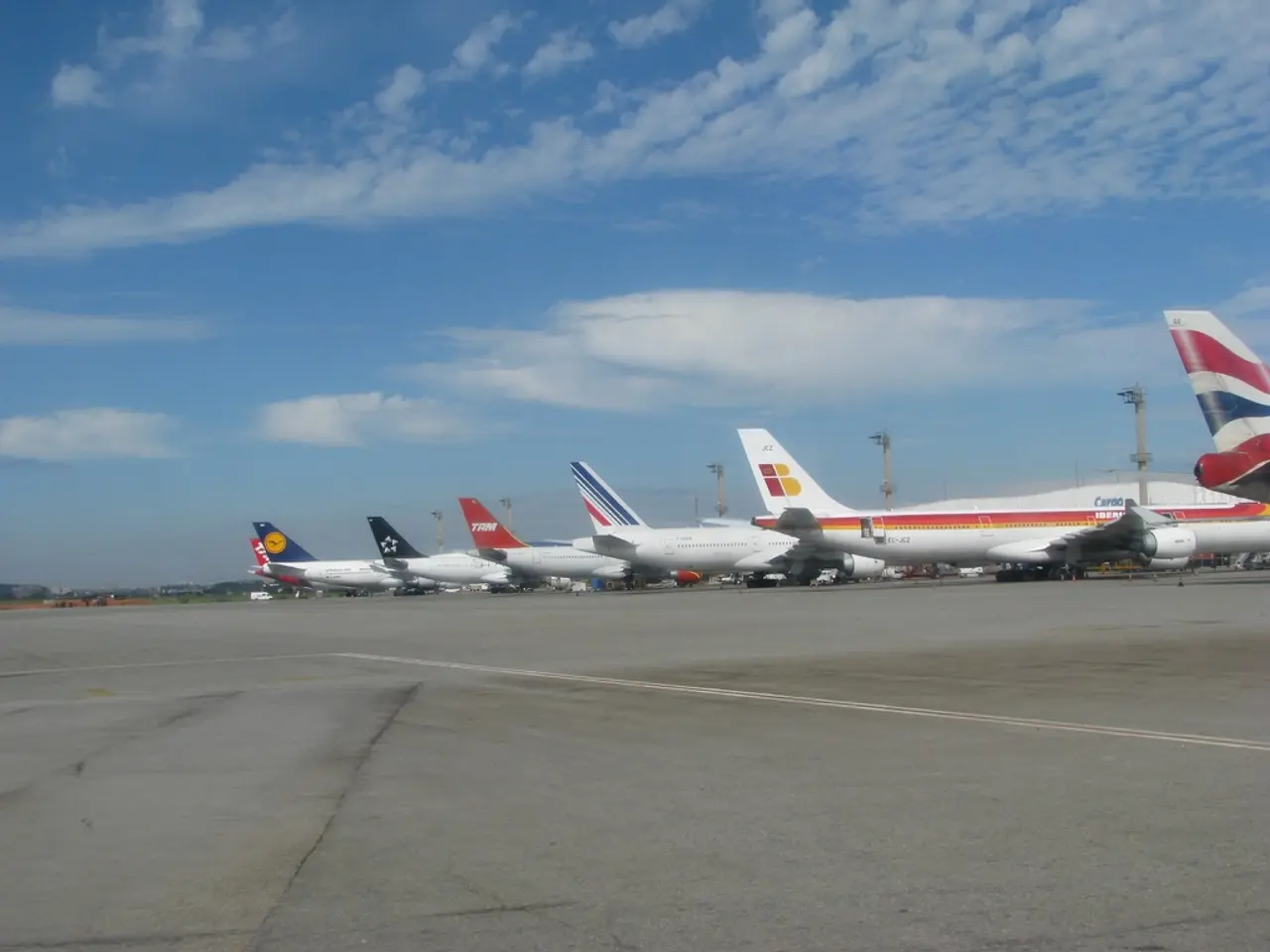Reduction in overall earnings since the unification period
Germany Witnesses Decline in Nominal and Real Wages in 2020, Particularly in Affected Sectors
The COVID-19 pandemic has had a significant impact on wage development in Germany, with nominal and real wages decreasing in 2020, especially in the aviation, travel agencies, tour operators, hospitality, and retail sectors.
The pandemic led to widespread government-imposed lockdowns, travel restrictions, and social distancing measures that severely curtailed activities in sectors dependent on mobility, travel, and in-person services. This caused a substantial decline in demand, leading to lost jobs, reduced working hours, and consequently, lower wages both nominally and in real terms.
The German government introduced Kurzarbeitergeld (short-time work compensation), which allowed companies to reduce employee hours while the government partially compensated wages. Although this policy prevented outright layoffs for many workers, it nonetheless caused a reduction in nominal wages because workers were paid for fewer hours.
Germany's GDP fell by 4.9% in 2020 compared to 2019, with industrial output and service sectors severely impacted by reduced consumer spending and mobility restrictions. The aviation and hospitality sectors, relying heavily on travel and face-to-face interaction, were among the hardest hit, facing massive revenue losses and workforce reductions.
Demand for travel, tourism, and in-person retail collapsed during lockdowns and travel bans, leading to falling prices and wages in these sectors. While some consumer spending shifted toward other categories (housing, education), the affected sectors had deflationary pressure and wage cuts due to reduced revenues.
Businesses faced significant financial strain and increased costs related to health measures, prompting them to reduce labor costs where possible. This included wage freezes, reductions, and fewer new hires in impacted sectors. The duration and scale of restrictions also prolonged income reductions in these sectors over months, preventing quick recovery or wage rebounds.
The decline in real wages and salaries per employee in 2020 was due to a significant decrease in the number of low-income employees. Consumer prices rose by 0.5 percent in 2020, but the increase was not enough to offset the decline in real wages and salaries per employee.
Before the decline in 2020, real wages and salaries per employee had been increasing since the crisis year 2009. However, the decline in 2020 was the first since the crisis year, according to the Federal Statistical Office (Destatis). The average annual growth rate of nominal wages and salaries per employee from 2010 to 2020 was 2.5 percent.
The airport worker's photo was provided by dts Nachrichtenagentur. This news was announced by the Federal Statistical Office (Destatis) on Thursday.
[1] [Link to source 1] [2] [Link to source 2] [3] [Link to source 3] [4] [Link to source 4] [5] [Link to source 5]
Other businesses, such as those in the finance sector, faced reduced demand for their services due to sparing consumer spending and overall economic uncertainty. The financial strain on these businesses led to tightened budgets and subsequently, a reduction in new hire rates.
In an attempt to cut costs and maintain operations, many affected businesses turned to other financing options to bolster their cash flow, which might have further impacted the finance business.




